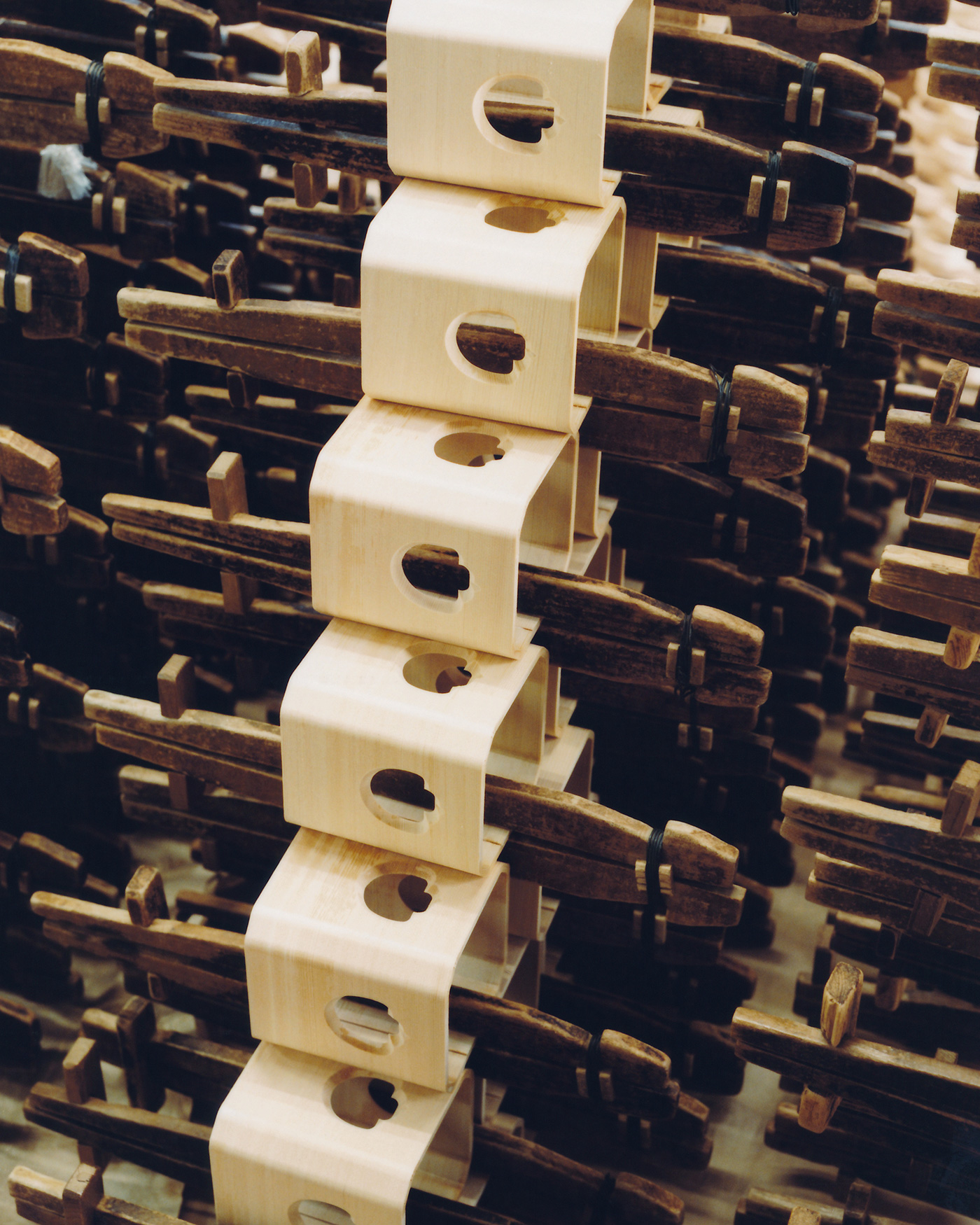Do you have any doll making techniques that are unique to your shop?
There is a basic method of making dolls, but we add our own touch. For example, our costumes have more layers, and we vary the size and color combinations. We want to show our shop’s personality.
In the past, Master Nagae used to make hundreds of dolls for wholesalers in bulk. The job of a doll maker was to produce many dolls with consistent quality. Dolls are given to girls when they are born to wish for their healthy growth, but nowadays fewer people buy them because of the low birthrate, the lack of space in their homes and the fading of festival culture. Orders from wholesalers have dropped significantly. Master Nagae and I realized that we had to change our approach and focus on making dolls with originality instead of mass production. We started to participate in an annual exhibition and a guild contest to showcase our work. We also switched from selling to wholesalers to producing on order for our customers.

The dolls on display here have a modern flair, with sunflower petals as a backdrop and vibrant colors and accessories.
Thank you. Most doll makers tend to use traditional Japanese colors for their dolls, but we wanted to do something different. We wanted to create dolls that would appeal to young people with a fresh and modern style. “Soleil ~ Blooming Sunflowers ~” is our award-winning piece that received the Excellence Award (the highest honor) in the Planning Category from the Japan Doll Association. The sunflower is Fuso’s town flower, and that’s where we took our inspiration.
We also incorporated other traditional crafts such as Arimatsu Narumi Shibori tie-dyeing and Owari Cloisonne enamelware, and handcrafted accessories such as fans to match our concept. Traditional accessories don’t really go well with dolls that have modern colors.
Other than your color choices, do you use any techniques that set Nagae Traditional Dolls apart?
Master Nagae developed a technique for layering the collar, sleeves and hem of the costume. For the junihitoe style of kimono, there are normally five layers. We doubled that to ten layers to add volume and shape the hem into a flared form. We carefully measure and cut each layer down to the millimeter so that they flare out beautifully when stacked together. We fine-tuned it until we found the optimal shape for a doll that looks stunning from any angle, not just from the front. I doubt anyone else puts as much effort and precision into their dolls as we do.

Your costumes use fabrics specially made for dolls, right?
Yes. For mass-produced dolls, most makers use doll fabric with patterns designed to fit the exact size of the roll. In a 10-meter roll, 100% of the material would be used for costumes. It would be too wasteful to have scraps left over. But we design all our colors and combinations ourselves, so we have to find dyers or order patterns and embroidery colors from Nishijin-ori wholesalers and have them weave custom fabric for us. For some costumes, such as those with Western-style patterns or Arimatsu Shibori tie-dying, we use fabric for humans, not dolls. We prioritize the patterns when cutting, so it inevitably leaves scraps and is not suitable for mass production.

What does this project by Nagoya City mean for Nagae Traditional Dolls in terms of creating new products?
With the birth rate declining more and more, it will be hard to make a living from just seasonal dolls. We will need to use our doll-making skills to create new products that can be sold all year round, not only in Japan but also overseas. That’s why we decided to apply for this project.
Your newest product is a single-flower vase. How did you go about making it?
We started with a wooden flower vase and added layers of fabric to decorate it, using the same technique we use for the collars of our dolls. We then made a cylindrical hole in the center and fitted a cloisonne vase inside. The whole process takes about two months from ordering the materials to finishing the product.

What kind of techniques and materials did you use for this project?
We applied one of our doll-making techniques, which we normally use to create many layers for the collar, sleeves and hem of a princess’s junihitoe kimono. For two to three months, we experimented with different fabrics and materials that we had on hand until we found what worked best. We decided to avoid fabrics like Nishijin-ori that have become standard as doll fabric. Instead, we chose fabrics used for western-style clothes.
We chose hemp wool (20% hemp, 80% wool) for the layers and Koshu Inden, a traditional craft from Yamanashi, for the “kimono” base. We paid careful attention to the color scheme and had our hemp wool custom-dyed by a textile shop.







